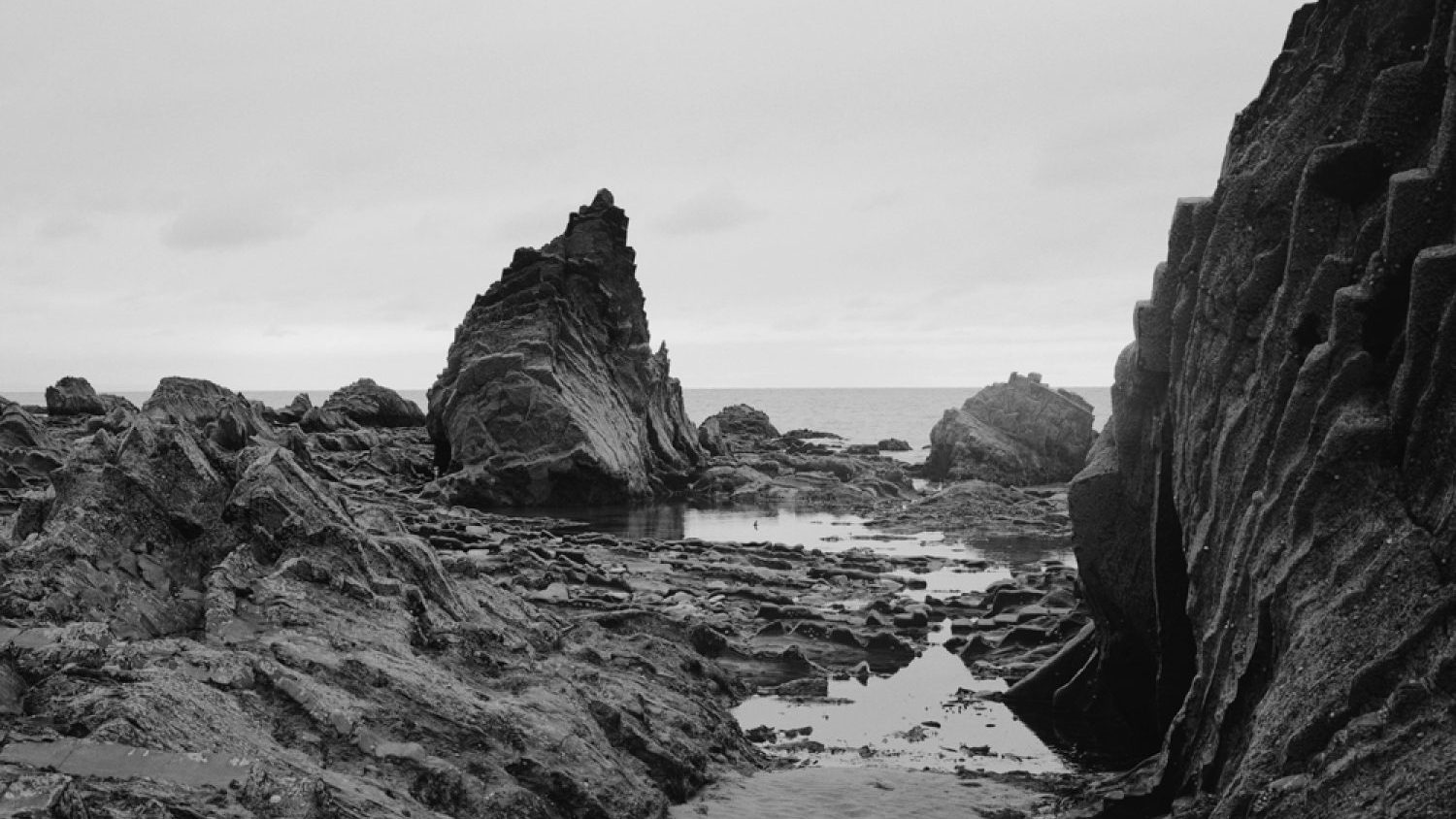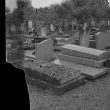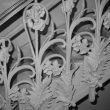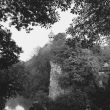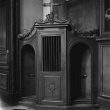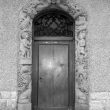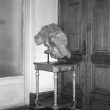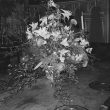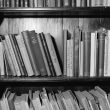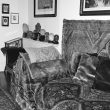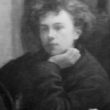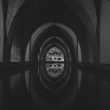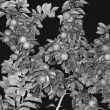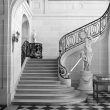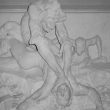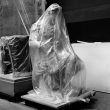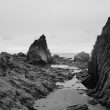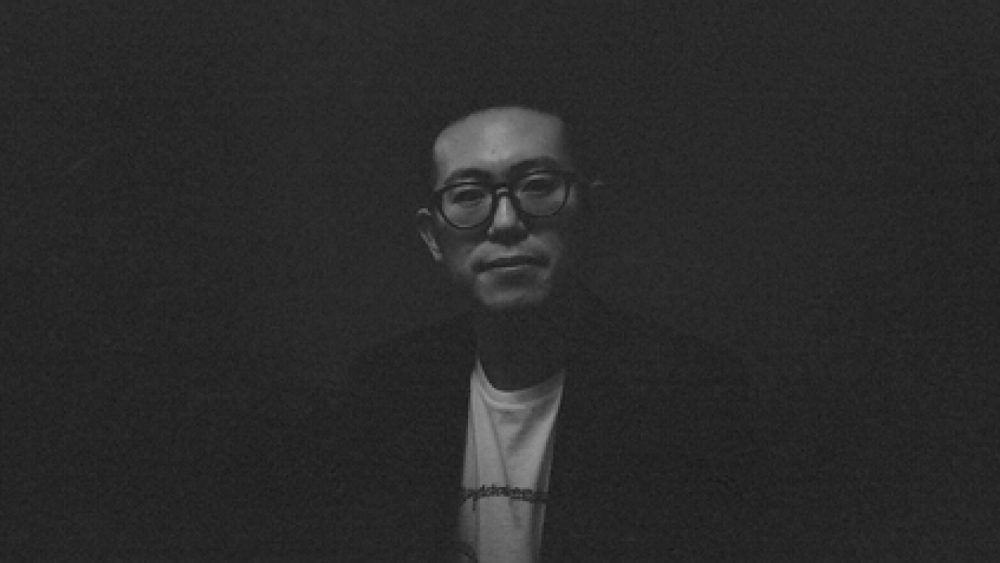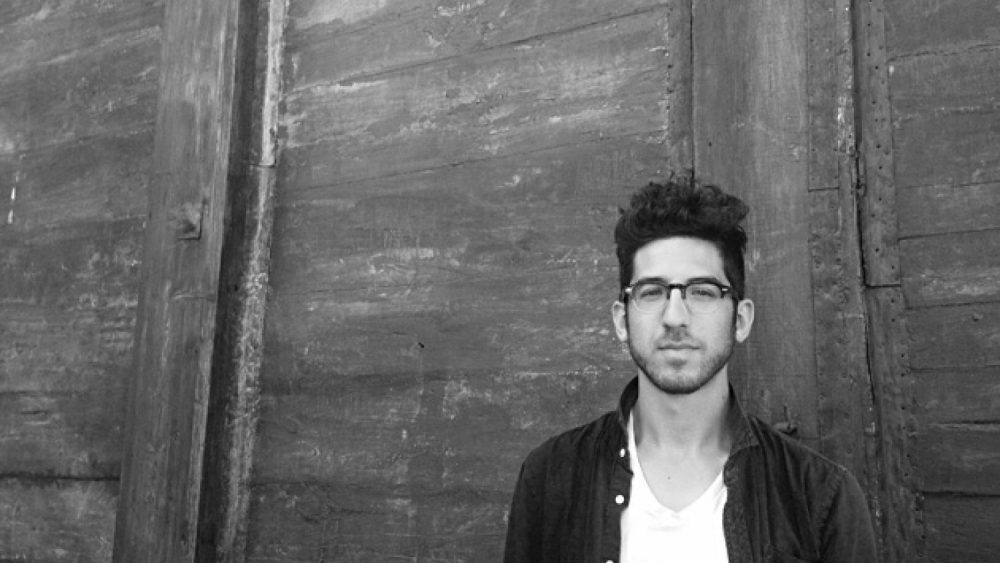Tereza Zelenkova
Czech-born Tereza Zelenkova’s (1985) homepage presents the viewer with an incomplete alphabet. The same occurs in her latest publication, The Absence of Myth, that accompanied her solo show in London at the end of last year. Rather than dividing her monochrome photographs into separate projects, Zelenkova chooses keywords, arranged from A to Z, to describe her subjects of interest – specific and implicit at the same time. In her work she engages with a number of themes. Time, nostalgia and melancholy are prevalent. Photographs of displays in museums and period interiors are mixed with still, uninhabited landscapes. In her work she draws on the writings of Bataille, Rimbaud, Kafka, blending the present with the past in her images, and the other way around.
Zelenkova has self-published several books, while Supreme Vice, addressing the revival of occult beliefs in the 19th century, was published by Mörel Books. She was a finalist of The 1000 Words Magazine Award 2012, Fresh Faced & Wild Eyed 2011 and was shortlisted for Saatchi New Sensations 2012. Her work has been featured in several international publications highlighting new contemporary photographers such as Collectors Guide to New Art Photography (Humble Arts Foundation, 2011) and Hijacked III (Big City Press, 2012). Her work has been exhibited in galleries and museums worldwide and is part of the collections at Fotomuseum Winterthur and Saatchi Gallery. Zelenkova is currently based in London where she has stayed since graduating from the Royal College of Art in 2012.
On your website, the images are classified in a dictionary-like manner. How did you decide to present your work in this way and how did you choose the keywords? Is it important that the images are connected by certain themes, almost events, rather than presented as projects?
I decided to order my photographs under dictionary-like categories about a year ago. It was quite an impulsive decision and stemmed from my frustration in trying to identify a clear subject for the project I was working on at that particular time. I slowly came to understand that there’s no such simple subject or narrative that binds my photographs together, but rather certain ongoing themes, interests and references that reappear throughout my work. Therefore I started to look for these individual terms under which I placed images of mine that directly or metaphorically represented them. The inspiration to do this also came partially from Georges Bataille’s dictionary of terms that appeared in the journal Documents. I guess the important aspect for me is the tension between the rational categorisation and the intuitive creation of these photographs. I also really enjoy how the terms overlap or relate to each other in so many ways, until a certain pattern emerges. And this pattern then reflects nothing more than my individual interests and the vision of the world.
Do you take images intuitively or are you more interested in constructing something that you have already pre-visualized?
It depends on the individual work. Generally I tend to work intuitively, without any predetermined concepts as such. At the same time, by allowing myself to work without any particular intentions, the resulting photographs are often centered around repetitive themes that subconsciously stem from my interests and perhaps cultural heritage. In short, even if I work without a preconceived subject, the subject is already there, pre-visualized in my head, but without me necessarily noticing at first. In that sense the difference between my work and constructed photographs is that I don’t “make” my photographs, I find them.
Do you only work in black and white?
I used to work in color but initially I learnt to shoot in black and white and I prefer it. So for some time now I’ve been working only in black and white.
Could you please talk a bit about the importance of literature in creating your work?
Literature is a great source of inspiration for my work, more so than visual art. I guess my photographs, similarly to literature, are for me a form of learning but also a type of escapism. Books take you to different places and let you live different lives and my photographs are an ongoing documentation of one such life.
You have made several books, and it seems you think carefully about the way you display your work in shows. What are the most important aspects for you when presenting work in book or exhibition form?
I’d say it’s like with everything – a different form requires different treatment. The most important is that the form is not just a hollow shell, but has substance and reflects on the concepts behind the work. There’s a thin line between art and design and for me it is essential that the form always comes after the content – in other words, that I make the work and then the photographs themselves determine the way they are displayed. This might sound like an obvious thing but I suspect that there are many people doing it the other way around.
